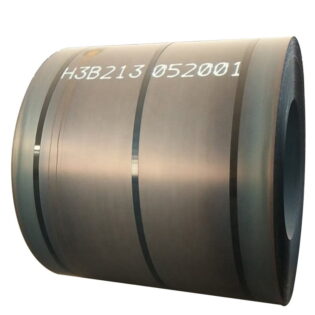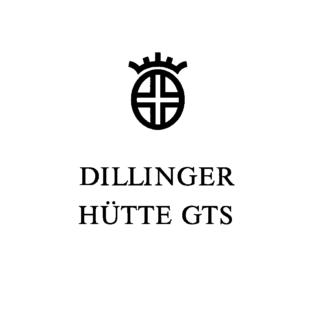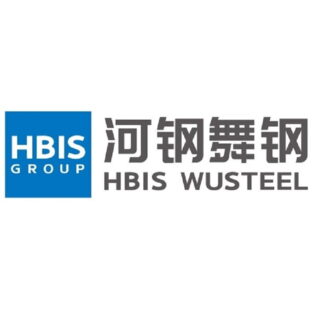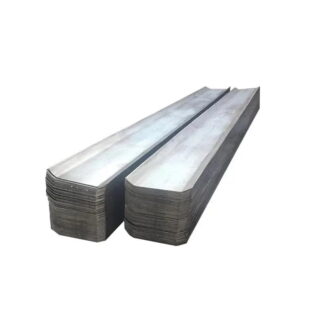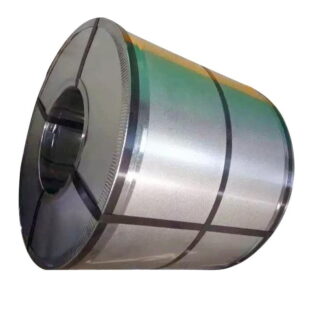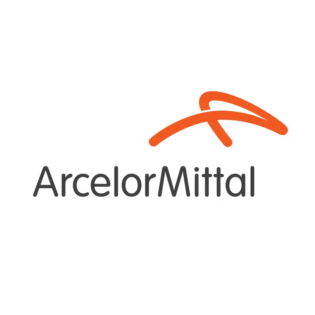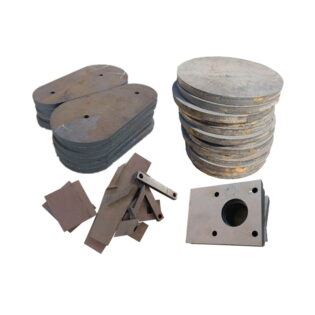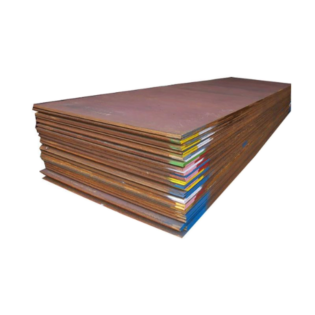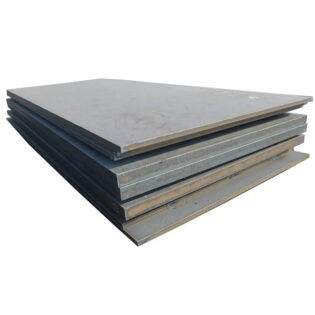DILLIMAX 1100 Description
DILLIMAX 1100 is a high strength quenched and tempered, fine grained structural steel with a minimum yield strength of 1100 MPa (160 ksi)1) in its delivery condition ex works. Its mechanical properties are achieved by water quenching followed by tempering.
DILLIMAX 1100 is preferentially used for steel components if weight shall be reduced to a considerable extent, e.g. hoisting devices and cranes.
名称と適用範囲
DILLIMAX 1100 can be delivered with the following dimensions according to the dimensional program. Other dimensions as larger widths e.g. for telescopic booms may be possible on request.
DILLIMAX 1100 Description
DILLIMAX 1100 is a high strength quenched and tempered, fine grained structural steel with a minimum yield strength of 1100 MPa (160 ksi)1) in its delivery condition ex works. Its mechanical properties are achieved by water quenching followed by tempering.
DILLIMAX 1100 is preferentially used for steel components if weight shall be reduced to a considerable extent, e.g. hoisting devices and cranes.
名称と適用範囲
DILLIMAX 1100 can be delivered with the following dimensions according to the dimensional program. Other dimensions as larger widths e.g. for telescopic booms may be possible on request.
| 板厚 t [mm] (in)a) | Width [mm] (in)a) | |
| ≥ 8.0 (0.3) | ≤ 9.5 (0.37) | 2500 (100) |
| > 9.5 (0.37) | ≤ 40 (1.6) | 3050 (120) |
a) The Values in brackets are for information only.
DILLIMAX 1100 Chemical composition
取鍋分析には、次の制限値 (%) が適用されます。
| C | そして | ん | P | S | Cr | で | モー | の | V+Nb | B |
| ≤ 0.18 | ≤ 0.50 | ≤ 1.60 | ≤ 0.015 | ≤ 0.005 | ≤ 2.00 | ≤ 3.5 | ≤ 0.70 | ≤ 0.01 | ≤ 0.10 | ≤ 0.004 |
十分なアルミニウム含有量により、鋼はきめが細かくなります。
Typical carbon equivalents CEV2) / CET3) are:
CEV = 0.78%
CET = 0.37%
DILLIMAX 1100 Delivery condition
Water quenched and tempered.
The Values in brackets are for information only.
2) CEV = C +Mn/6 +(Cr+Mo+V)/5 + (Cu+Ni)/15
3) CET = C +(Mn+Mo)/10 +(Cr+Cu)/20 + Ni/40
出荷状態での機械的および技術的特性
Tensile test at ambient temperature – transverse test specimens –
| Plate thickness Minimum elongation t [mm] (インチ) a) | 抗張力 Rm [MPa] (ksi) a) | 最小降伏強度 ReH b) [MPa] (ksi) a) | 最小 あ5 [%] | elongation あ2インチc) [%] |
| ≥ 8 (0.3) < 20 (0.8) | 1200 – 1500 | 10 | 11 | |
| ≥ 20 (0.8) ≤ 40 (1.6) | (175 – 220 ksi)1) | 1100 (160) | 8 | 9 |
a) The Values in brackets are for information only.
b) If not apparent, the yield strength Rp0.2 is measured instead.
c) These values apply if tested according to ASTM A370.
シャルピー V 試験片の衝撃試験
| DILLIMAX 1100 | 試験片の方向 | Impact energy Av in J (ft.-lb.) a) at test temperature of -40 °C (-40 °F)a) |
| High toughness | 縦/横 | 30/27 (22/20) |
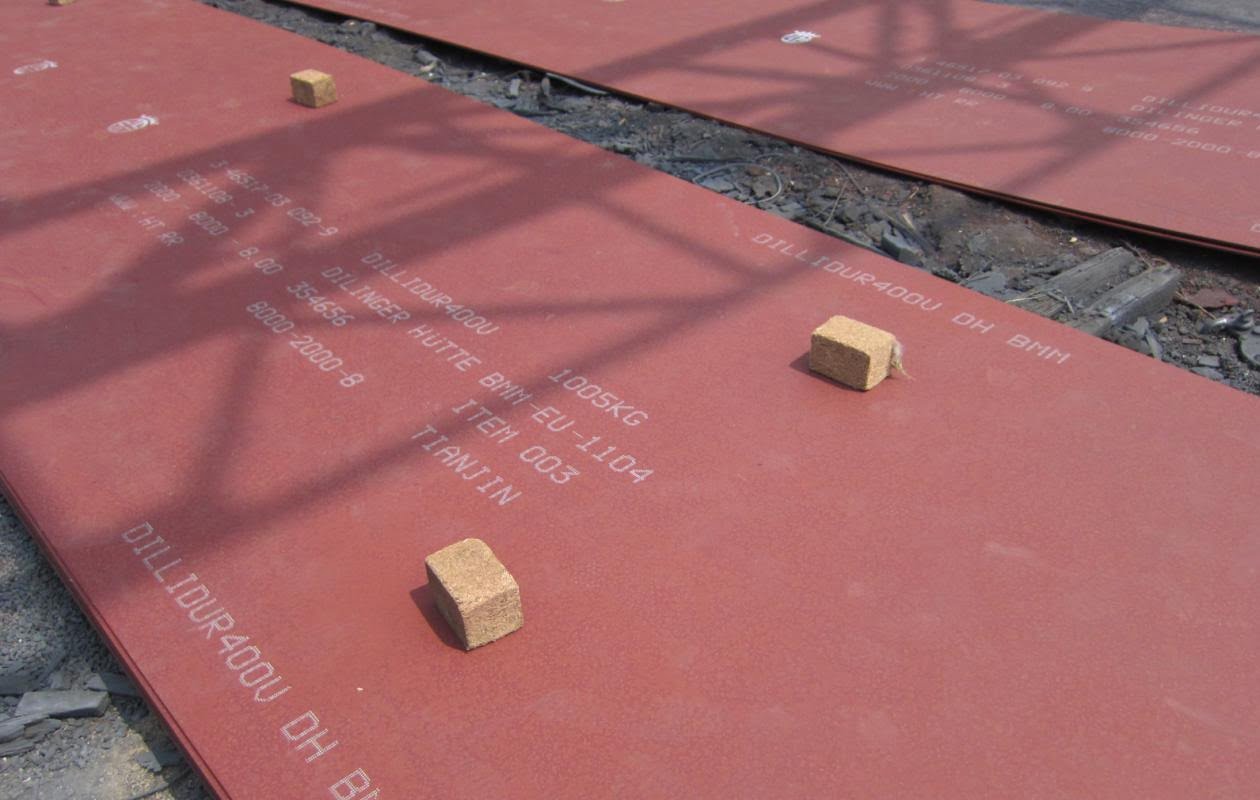
a)The Values in brackets are for information only.
An extra tough grade with guaranteed Charpy values at -60°C (-76 °F)4) may be agreed on request.
指定された最小値は 3 回のテストの平均です。 1 つの個別の値は、指定された最小平均値を下回る場合がありますが、その値の 70 % 以上である必要があります。プレートの厚さが 12 mm (0.5 インチ) 未満の場合 4)、幅を狭くしたシャルピー V 試験片で試験を実行できます。最小幅は 5 mm (0.2 インチ) である必要があります 4)。最小衝撃値は比例して減少します。
DILLIMAX 1100 Testing
Tensile and impact tests will be performed on both ends of the heat treatment unit.
引張試験用の試験片は EN 10025-6 に従って作成されます。試験は標点間距離 L の試験片に対して実行されます。0 = 5.65⋅√S0 またはL0 = 5⋅日0, in accordance with EN ISO 6892-1. Tensile tests according to ASTM A370 may be agreed.
The impact test will be carried out on Charpy-V-specimens in accordance with EN ISO 148-1. Unless otherwise agreed, the test will be performed on transverse test specimens taken as follows:
- for plate thicknesses < 40 mm (1.6 in) 4): 試験片は、片側が 2 mm (0.08 インチ) より離れないようにして採取するものとします。4) 圧延された表面から。
- 板厚 ≥ 40 mm (1.6 インチ) の場合 4):板厚の1/4。
別段の合意がない限り、試験結果は EN 10204 に従って証明書 3.1 に文書化されます。
DILLIMAX 1100 Marking
別段の合意がない限り、マーキングは少なくとも次の情報を含む低応力鋼製スタンプによって実行されます。
- steel grade (DILLIMAX 1100)
- 熱数
- マザープレートと個別プレートの数
- メーカーのシンボルマーク
- 認可された検査代表者のサイン
4) 括弧内の値は情報提供のみを目的としています。
DILLIMAX 1100 Processing
加工および適用技術全体が、この鋼から作られた製品の信頼性にとって基本的に重要です。ユーザーは、設計、構造、および加工方法が材料に適合していること、製造業者が準拠する必要がある最先端技術に対応していること、および意図された用途に適していることを確認する必要があります。材料の選択はお客様の責任となります。 EN 1011 (溶接) および CEN/TR 10347 (成形) の推奨事項、および国内規則に従った作業の安全に関する推奨事項を遵守する必要があります。
We recommend to consult us prior to the first working with DILLIMAX 1100. Detailed instructions for flame cutting, welding, machining and about the structural properties of the DILLIMAX are provided in the technical information “MAKE SAVINGS WITH HIGH STRENGTH STEELS – DILLIMAX”.
DILLIMAX 1100 Cold forming
DILLIMAX 1100 can be cold formed below 200 °C (390 °F)5) taking into account its high yield strength. Flame cut or sheared edges in the bending area should be ground before cold forming. It is also advisable to round the plate edge slightly on the outside of the bend coming under tension stress during bending.
Cold forming is always related to a hardening of the steel and a decrease in toughness. In contrast to lower yield strength steels DILLIMAX 1100 can not be heat treated at temperatures about 550°C(1022 °F)5) to reduce the strain hardening effects.
After higher cold forming amounts or if prescribed by regulations, a new quenching and tempering treatment may become necessary to restore the required mechanical properties. In this case, we recommend to consult us prior to ordering.
成形プロセス中にワークピースが破損する可能性によって誰もが危険にさらされないよう、加工中は必要な安全対策を講じる必要があります。
以下の形状は、通常、表面欠陥を形成することなく冷間成形によって実現できます (t はプレートの厚さです)。
| 最小曲げ半径 | 最小ダイ幅 | |||
| Plate thickness t[mm] | < 20 mm (0.8 in) a) | ≥ 20 mm (0.8 in) a) | < 20 mm (0.8 in) a) | ≥ 20 mm (0.8 in) a) |
| 横方向 | 4t | 5 t | 12t | 14 t |
| 長手方向 | 5 t | 6 t | 14 t | 16トン |
a) The Values in brackets are for information only.
Hot forming
If the temperature of 220 °C (428 °F)5) is exceeded, the initial tempering will be altered so that the mechanical properties are affected. To regain the initial properties new quenching and tempering become necessary. However, water quenching of a formed work piece or component will often be less effective than the original quenching in the plate mill so that the fabricator may not be able to reestablish the properties required. Therefore hot forming is not suitable.
最後に、適切な熱処理を通じて鋼の必要な値を得るのは製造者の責任です。
火炎切断と溶接
Due to its high yield strength, DILLIMAX 1100 requires special care during plate processing.
For flame cutting, the following minimum preheating temperatures are recommended: 75 °C (165 °F)5) for plate thickness up to 20 mm (0.8 in)5) and 125 °C (260 °F) 5) for plates thickness up to 40 mm
(1.6 in)5)。
For general welding instructions, please consult the EN 1011-2. So far no welding consumables are available that produce tensile properties matching the base material. Thus, fully loaded joints must be avoided by an appropriate design. Minimum preheating, interpass and working temperature shall be limited to a range from 150 °C (302 °F)5) up to 200 °C (390 °F)5)。
To avoid hydrogen-induced cold cracking, only filler materials which add very little hydrogen to the base metal may be used. Therefore, shielded arc welding should be preferred.
For manual arc welding, electrodes with basic coating (type HD < 5 ml / 100 g in accordance with ISO 3690), and dried according to the manufacturer’s instructions, should be used.
5) 括弧内の値は情報提供のみを目的としています。
With increasing plate thickness, increasing hydrogen charge and restraint of the weld, a soaking for hydrogen effusion immediately after welding is recommended. The temperature for this treatment shall be in the range of 180 °C (355 °F)6) up to 220 °C (428 °F)6). To reduce hydrogen to an uncritical rate, we recommend the following holding times in the temperature range of 180 °C (355 °F)6) up to 220 °C (428 °F)6) (1 hour for welding joint thickness of up to 20 mm (0.8 in)6); 2 hours for welding joint thickness of up to 30 mm (1.18 in)6); and 4 hours for welding joint thickness of up to 40mm (1.6 in)6)).
A stress relief heat treatment is not possible and flame straightening is generally not permitted because these operations would reduce the tensile properties of the steel. Only in areas of the component where a local softening can be tolerated, straightening by flame or by inductive heating may be applied (in agreement with the design department).
一般的な技術的な提供要件
別段の合意がない限り、EN 10021 に準拠した一般的な技術提供要件が適用されます。
公差
Unless otherwise agreed, the tolerances will be in accordance with EN 10029, with class B for thickness and table 4, steel group H, for the maximum flatness deviation. Smaller flatness deviations may be possible on request prior to order (see specification DILLIMX TL for telescopic booms).
表面品質
Unless otherwise agreed, the specifications will be in accordance with EN 10163-2, class B3.
一般的な注意事項
If particular requirements are demanded and not covered in this data sheet, please contact us with the specifications for our review and agreement prior to ordering. The information in this data sheet is a product description. This data sheet is updated at occasion demands. The latest version is available from the mill or as download at www.dillinger.de。
6) 括弧内の値は情報提供のみを目的としています。


